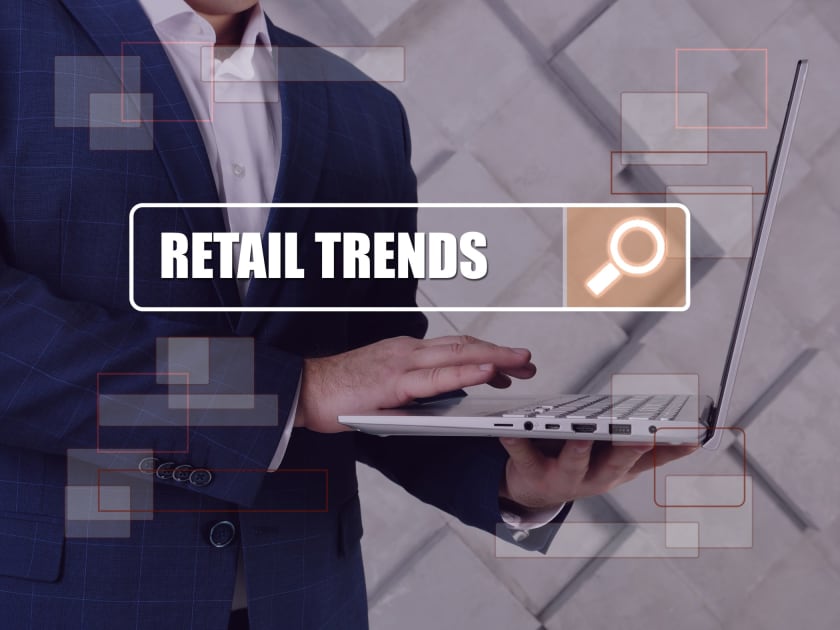Five Retail Trends that Survived the Pandemic



The concept of shopping can be divided into two categories, buying what you need and buying what you want. For example, grocery shopping is a necessity but buying an ice-cream sundae is an indulgence. Today, when the entire world is fighting a pandemic, consumers’ way of looking at things has changed. Their purchase power has significantly altered. They have become more conservative and calculative rather than spontaneous and reckless.
With limited resources, shortness of commodities, and global uncertainties, consumers have started prioritizing the soundness and wellbeing of their families. Obtaining goods and services has not stopped, and it never will. Nevertheless, consumer requirements have changed. Having one’s fridge stocked with fresh and quality produce, and being able to acquire this from the comfort and safety of one’s home is more important than being able to handpick those fresh tomatoes.
The way the consumers want to spend their time and money is evolving, and this has directly affected the retail sector. As distance or remote working is the new trend and people are spending more time at home, categories like grocery, home improvement, digital services, health and sanitization products, etc. are experiencing a sustained uplift. At the same time, when it comes to apparel, people are investing more in top wear rather than bottom wear, or more in casual and comfort wear rather than formal wear.
Various categories, such as fine dining, tourism, or recreational activities may experience some acceleration due to pent-up demand when lockdowns or restrictions are relatively relaxed. However, as the global economy is learning to live with this pandemic, many retail trends have undergone a fundamental transformation. E-commerce has reported an unprecedented growth in the past two years, and with even the senior citizens finally adapting to this new normal, e-commerce will continue to grow even after the reopening of brick-and-mortar stores.
Let us have a look at five major retail trends that have survived this pandemic and will continue to determine the course that the retail sector takes.
E-commerce

Online shopping existed during the pre-COVID 19 eras as well. However, limiting trips to stores is not a luxury anymore. Mandated lockdowns and pandemic-related safety concerns have converted this luxury to necessity. Consumer behavior has changed, new habits have formed, and from periodic online shopping of electronics or apparels, the retail market has now moved to regular digital shopping of grocery and medicines.
By the end of 2021, over 2.14 billion people would have utilized digital shopping worldwide. This makes 27.6% of the entire world’s population; meaning about one out of every four people living on this planet is an online shopper. The success of Amazon, Flipkart, or Myntra needs no reiteration but even the local vendors have now started selling through various app-based digital platforms. With lockdown-forced store closures and social distancing requirements, the trajectory of most businesses has changed and the need for digitalization has rocketed.
As consumers across all age groups and income levels have adopted the new retail trend of online shopping, most businesses have also chosen to reconfigure their models. With increasing popularity of social e-commerce and livestream shopping, retailers are striving to provide a seamless online shopping experience to survive the competition and ensure customer loyalty.
-Safe and Contactless In-store Shopping Experience
Brick-and-mortar stores took a major blow when they were temporarily closed, thanks to the pandemic-induced lockdowns worldwide. However, with the rollout of vaccines and eased restrictions, consumers have started venturing out of their homes again. That does not mean the retail landscape has completely returned to normalcy. Pivoting and adapting to the next normal is essential for the survival of retail. Providing the consumers with a safe and contactless in-store shopping experience is the need of the hour.
Consumers have been longing for the in-store shopping experience. They are returning to the physical stores for the convenience of quick shopping, in-person customer care, and the pleasure of ‘trying out’ before actual purchase. However, they also want to be safe at the same time. This has led to revamped store layouts which adhere to social distancing and health-boosting measures.
The retailers have invested in efforts like frequent sanitization of in-store space, restricted foot traffic at a time, social distancing barricades, kiosks for temperature measurement, employee health check-up, and so on. Contactless payments have helped minimize customer contact with store surfaces, while self-checkout, social distancing monitoring, and mask detection technologies have created safer in-store shopping environments.
-Innovative Delivery Ideas
Converting a physical store to a fulfillment center and implementing innovative delivery ideas is crucial to surviving the pandemic-kindled retail competition. Many retailers are now embracing a ‘digital-first’ approach in their brick-and-mortar stores and using the physical spaces for complementing the digital shopping experience. More and more customers now prefer BOPIS (buy-online-pick-up-in-store) or curbside pickups as they are convenient, safe and reduce the time spent in waiting for the product to be delivered at home.
In 2021, retailers witnessed over 208% increase in BOPIS. This is one of the retail trends that will stick even in the post-pandemic era.
Increasing competition has made it essential for the digital retailers to attract customers with innovative services and delivery ideas, such as free shipping, quick home deliveries, easy exchanges, flexible order fulfillment and returns, online promotional events, major discounts, and so on.
-Omnichannel Merchandising

Omnichannel merchandising delineates the combination of promotional activities conducted for multichannel commerce, weaving digital and in-store retail together. It aims at offering the consumers a unified shopping experience across all avenues. Using the customer data and statistics collected through digital platforms to create personalized in-store shopping experiences is one of the newest retail trends that will help retail grow in modern times.
The role of physical stores is changing. Rather than being the place where consumers can browse through the items and complete purchases, they are becoming the place where customers can experience the goods and services or receive sensory inputs on the items they want to buy, which they have already discovered through digital shopping channels. For example, digital apps and augmented reality are being used to provide the customers virtual try-ons for high-touch items like makeup, jewelry, apparel, glasses, etc.
However, while employing Omnichannel merchandising, the retailers will also have to be sensitive towards the financial hardships the customers are facing and adhere to mindful marketing.
-Shifting Population
With increasing health related concerns and social distancing requirements, people are fleeing urban communities and moving to less densely populated regions. Moreover, due to the remote and hybrid work culture, the city centers or commercial areas, which used to be bustling, especially during weekdays, now seem relatively deserted and empty. Consumers now prefer to shop locally, or near their homes. This has forced retailers to reevaluate their store footprints, commercial operations, and marketing strategies.
Wrapping Up
Customer needs and priorities are evolving, and retailers need to modify their operations and respond to these trends in order to pull through the pandemic wave. Increasing the use of data analytics to understand customer needs and providing them with safe in-store experiences, enriched digital offerings, and unique value propositions, while also maintaining cost-effectiveness is the prerequisite of the post-COVID retail. Reach out to the experts at Fashinza if you require any help with the sourcing and manufacturing of your fashion house. We can simplify the process of sourcing clothes for you so that you can relax and focus on the big picture.



















